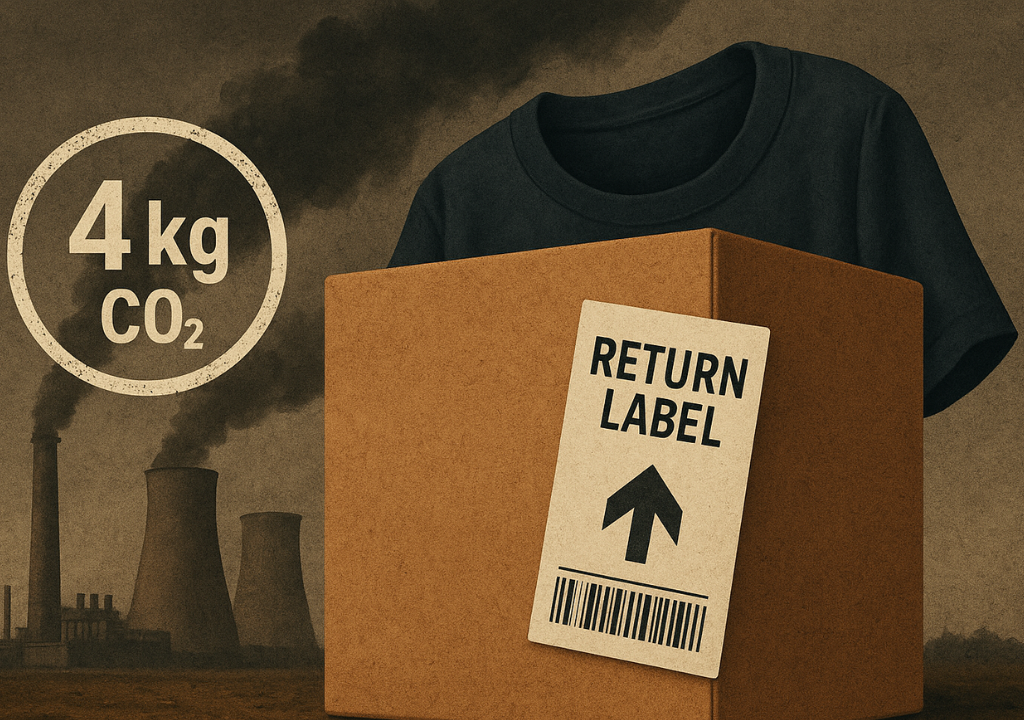FRACTURED EDIT
Returns Come at a Price

In the golden age of online shopping, returning an item is as easy as ordering it. But what’s hidden behind the convenience of “free returns” is a sustainability crisis few talk about; one that silently fuels waste, emissions, and overconsumption.
Returns Are a Carbon-Heavy Loop
Every time a product is returned, it doesn’t just go back to the seller. It enters a complex web of transport, sorting, inspection, repackaging, or even destruction.
- Fashion e-commerce sees return rates between 30% to 40%, especially in apparel and footwear.
- Each return can generate up to 4 kg of CO₂ emissions, depending on distance and handling; often exceeding the footprint of the initial delivery.
- A staggering 30% to 40% of returned fashion items are never resold; they are often incinerated, landfilled, or liquidated at deep losses.
Why Returns Are a Sustainability Blind Spot
The fashion industry is one of the most resource-intensive sectors on the planet. While much of the conversation focuses on raw materials, production practices, and packaging; the environmental cost of returns rarely makes headlines; yet its impact is massive.
Here’s why:
- Additional transportation: Returns often take longer, more fragmented routes than deliveries; racking up higher emissions.
- Resource loss: Repackaging, reprocessing, or restocking items takes time, labor, and materials; in many cases, brands choose not to do it at all.
- Waste generation: Damaged or unsellable returns frequently end up as landfill; adding to the fashion industry’s 92 million tonnes of annual textile waste.
- Behavioral cost: Free, easy returns incentivize overordering and impulsive shopping; habits that erode the values of sustainability.
The Psychology of Easy Returns
Returns are marketed as risk-free convenience. But that very mindset; “order now, decide later”; undermines the push toward conscious consumption.
- Multiple sizes “just in case.”
- Impulse buys with no long-term intention.
- Disregard for sizing tools or product details.
These behaviors may feel harmless individually; but collectively contribute to systemic waste and emissions.
What Can Shoppers Do Differently?
Sustainability is not just about what brands do; it’s about what consumers choose to do. You have more power than you think.
Here’s how to reduce your return footprint:
- Check size charts carefully and use model measurements or reviews to gauge fit.
- Pause before purchase. Ask: “Do I truly need this?” or “Will I wear it long-term?”
- Avoid bulk ordering with the intent to return.
- Look for detailed product descriptions and images; they’re there to help you decide wisely.
- Support brands that offer virtual try-ons, consultations, or sustainable return policies.
Every Return Is a Climate Cost
Behind every return label is a decision with environmental weight. As we demand more sustainability from the fashion industry; we must also look inward; at the habits we’ve normalised.
Buying better means returning less; and that starts with awareness.
Let’s shop smarter; let’s return less; let’s rethink convenience.






